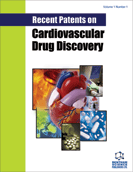Abstract
Atherosclerosis is the leading cause of death and disability in the developed world. Although the low-density lipoprotein (LDL) cholesterol lowering drugs reduce the mortality and morbidity associated with coronary artery disease, considerable mortality and morbidity remains. Reverse cholesterol transport mediated by high-density lipoproteins (HDL) may provide an independent pathway for lipid removal from atheroma. The current NCEP ATPIII include HDLcholesterol ≥1.6 mmol/l as a negative risk factor. Torcetrapib is an inhibitor of cholesteryl ester-transfer protein (CETP) that increases high-density lipoprotein (HDL) cholesterol levels. The drug increases HDL-cholesterol and apolipoprotein A-I levels and decreases LDL-cholesterol and apolipoprotein B levels. The effect is showed in monotherapy and when administered in combination with statins. In addition, torcetrapib did not significantly change the serum levels of cholesterol and triglycerides. The raising HDL-cholesterol with torcetrapib could be a new approach to atherosclerotic cardiovascular disease although new trials based on hard clinical end points are necessary.
Keywords: Atherosclerosis, HDL-cholesterol, LDL-cholesterol, statins, torcetrapib, CETP
 13
13


